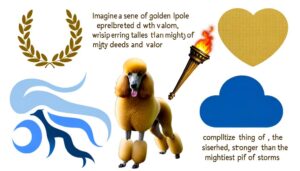What Is the Meaning of Swan Symbol Jewelry?
The swan symbol in jewelry encapsulates rich historical and mythological significance. Ancient civilizations revered swans for their grace and beauty, associating them with deities like Aphrodite and Venus.
In various mythologies, swans symbolize transformation, purity, and enlightenment, evident in Celtic, Norse, and Hindu traditions. Modern interpretations of swan jewelry emphasize elegance, resilience, and enduring love.
Designs often incorporate pearls and diamonds to enhance aesthetic appeal and represent purity. Key factors in selecting swan jewelry include craftsmanship, materials, and symbolic resonance.
For an in-depth understanding, examining historical and cultural contexts provides invaluable insights.
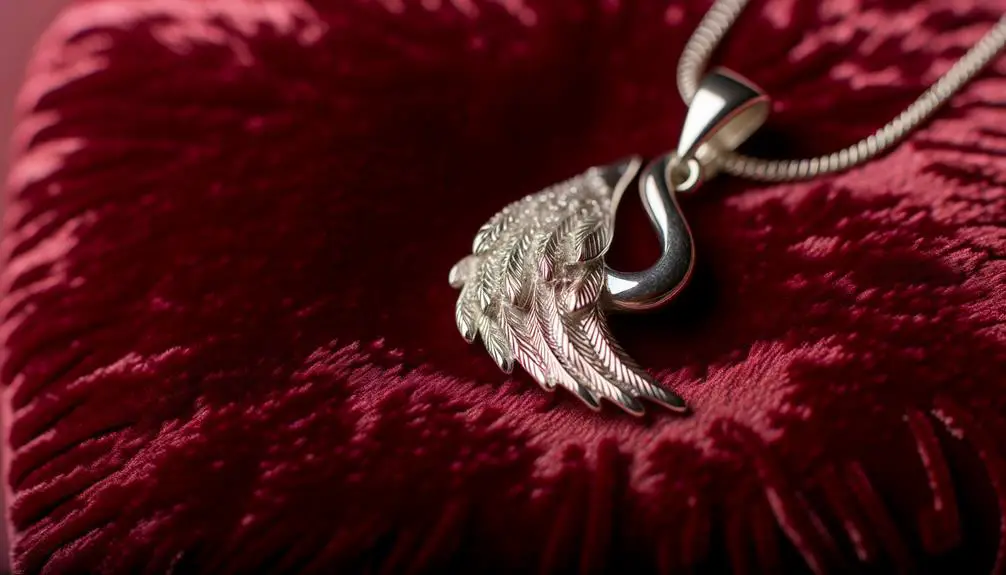
Key Takeaways
- Represents themes of grace, beauty, and transformation from ancient civilizations to modern times.
- Symbolizes purity and spiritual enlightenment in various mythologies and cultural contexts.
- Associated with love and fidelity in Chinese folklore and linked to goddesses in Greek and Hindu mythology.
- Modern swan jewelry conveys messages of resilience, enduring love, and elegance.
- Often crafted with pearls and diamonds to enhance elegance and symbolize purity.
Historical Significance
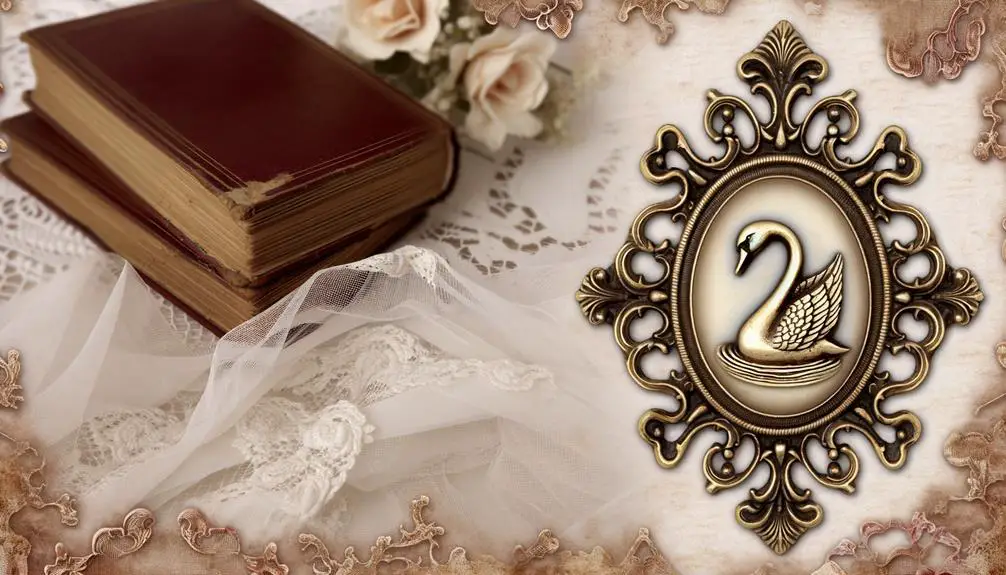
The swan symbol in jewelry has a rich historical significance, tracing its origins back to ancient civilizations where it was often associated with grace, beauty, and transformation.
In ancient Greek mythology, swans were sacred to Aphrodite, the goddess of love, symbolizing purity and elegance. Similarly, in Roman culture, the swan was linked to Venus, enhancing its association with femininity and allure.
The Celts revered the swan as a potent emblem of transformation and intuition, often depicted in their intricate metalwork. During the Renaissance, swans adorned jewelry to signify nobility and refinement.
This historical context underscores the enduring appeal of the swan motif, illustrating its multifaceted symbolism across different eras and cultures in the domain of ornamental arts.
Cultural Interpretations
Cultural interpretations of the swan symbol on jewelry are richly layered, encompassing ancient mythological significance, Eastern symbolic associations, and modern interpretive trends.
Historically, swans have been revered in various mythologies, symbolizing purity, transformation, and love.
In Eastern cultures, the swan is often associated with grace and spiritual enlightenment, while contemporary interpretations frequently highlight themes of elegance and personal growth.
Ancient Mythological Significance
Throughout various ancient cultures, the swan symbol has been imbued with profound mythological significance, often representing themes of transformation, beauty, and purity.
In Greek mythology, swans are associated with Apollo, the god of music, prophecy, and healing, symbolizing harmony and inspiration. The tale of Leda and the Swan, where Zeus transforms into a swan, underscores themes of metamorphosis and divine intervention.
Similarly, in Celtic mythology, swans are seen as shape-shifters, often linked to the Otherworld and embodying the soul's journey.
Norse mythology also venerates swans; the Valkyries, who guide fallen warriors to Valhalla, are often depicted with swan-like qualities.
These varied cultural narratives highlight the swan's enduring symbolic resonance across ancient civilizations.
Eastern Symbolic Associations
In Eastern traditions, the swan symbol is intricately woven into the cultural fabric, representing attributes such as grace, purity, and spiritual enlightenment.
In Hindu mythology, the swan, or 'Hamsa,' is associated with the goddess Saraswati, embodying wisdom and artistic inspiration. The bird's ability to separate milk from water signifies discernment and purity.
In Buddhism, swans are revered as symbols of spiritual transcendence, often depicted in Jataka tales to illustrate the soul's journey towards enlightenment.
Chinese folklore similarly reveres swans for their elegance and loyalty, often appearing in literature and art as emblems of fidelity and beauty.
Consequently, the swan's symbolism in Eastern contexts is rich with layers of historical and spiritual significance, deeply influencing jewelry design and cultural expression.
Modern Interpretive Trends
Building on the rich historical and spiritual significance of swans in Eastern traditions, contemporary interpretations of swan symbols in jewelry have evolved to reflect modern sensibilities and aesthetic preferences. Today, swan motifs are often associated with themes of purity, grace, and transformation, transcending their original cultural contexts.
These symbols are frequently integrated into minimalist designs, resonating with today's preference for understated elegance. Additionally, swans are sometimes used to convey messages of resilience and enduring love, aligning with contemporary narratives of personal growth and relational stability.
This modern reinterpretation aligns with broader societal shifts towards valuing individuality and emotional depth, demonstrating how ancient symbols can be adapted to meet the evolving tastes and values of today's consumers.
Symbolism in Love
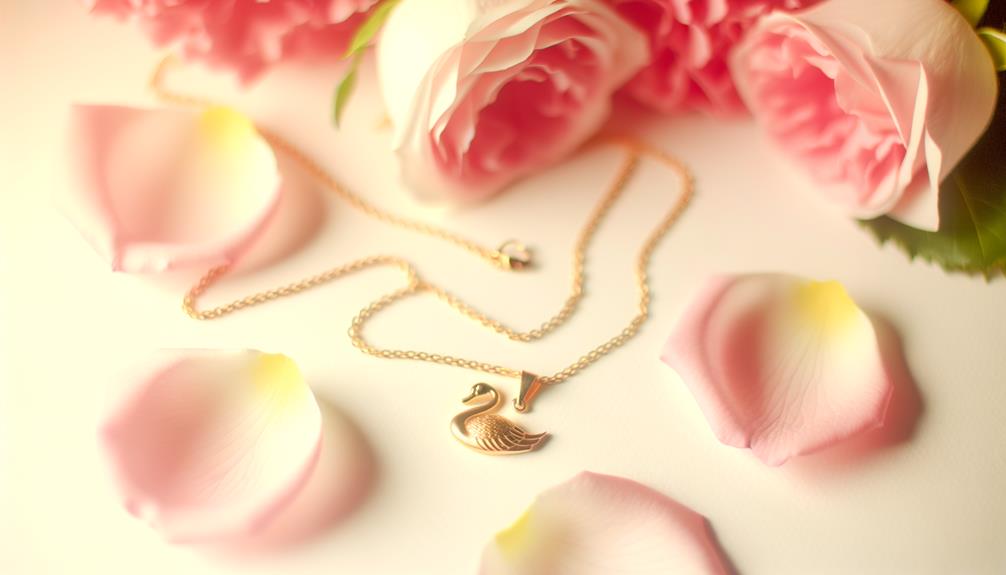
In classical mythology and various cultural traditions, swans are frequently emblematic of eternal love and unwavering commitment, often featured in romantic narratives and folklore.
This symbolism is rooted in the swan's behavioral traits, particularly their lifelong monogamous pairing, which has been observed and revered for centuries.
As a result, swan motifs in jewelry are not merely ornamental; they are deeply imbued with meanings of grace, fidelity, and enduring affection.
Eternal Love Representation
Often depicted gliding gracefully through serene waters, the swan has long been a potent symbol of eternal love, its presence in jewelry serving as a timeless emblem of enduring romantic bonds. Rooted in classical mythology and folklore, the swan's monogamous nature and lifelong mating habits render it an ideal representation of fidelity and lasting affection. Below is a concise comparison of swan symbolism across various cultures:
| Culture | Symbolism of the Swan |
|---|---|
| Greek | Divine love and beauty |
| Celtic | Transformation and loyalty |
| Hindu | Purity and spiritual love |
| Chinese | Marriage and harmony |
| Native American | Fidelity and partnership |
Such cultural reverence underscores its universal appeal in romantic jewelry, encapsulating the essence of eternal love.
Grace and Commitment
The swan, with its innate elegance and unwavering dedication, epitomizes grace and commitment in romantic relationships, making it a profound symbol in the world of love-themed jewelry.
Historically, swans have been revered in various cultures for their lifelong monogamous bonds, symbolizing fidelity and enduring love. In Ancient Greek mythology, Zeus transformed into a swan to woo Leda, underscoring the bird's romantic connotation.
This symbolism extends to jewelry, where swan motifs are meticulously crafted to signify the beauty and steadfastness of love. The swan's graceful movements and serene presence further enhance its representation of a harmonious and committed partnership.
Therefore, swan-themed jewelry pieces are not merely decorative; they carry a rich, historical significance of unwavering devotion and elegance.
Spiritual Connections
Given its ethereal grace and beauty, the swan symbol on jewelry is often regarded as a potent emblem of spiritual transformation and purity across various cultures. Historically, swans have been linked to divine inspiration and the soul's journey towards enlightenment. In Greek mythology, swans were sacred to Apollo, the god of prophecy and music, symbolizing poetic inspiration. In Hinduism, the swan is associated with Saraswati, the goddess of wisdom and learning, representing mental clarity and enlightenment.
| Culture | Symbolism | Deity/Association |
|---|---|---|
| Greek | Divine inspiration | Apollo |
| Hinduism | Wisdom and enlightenment | Saraswati |
| Celtic | Transformation and fidelity | Various nature deities |
| Native American | Inner beauty and self-awareness | Spiritual guides |
These rich cultural associations underline the swan's enduring spiritual significance.
Modern Jewelry Designs
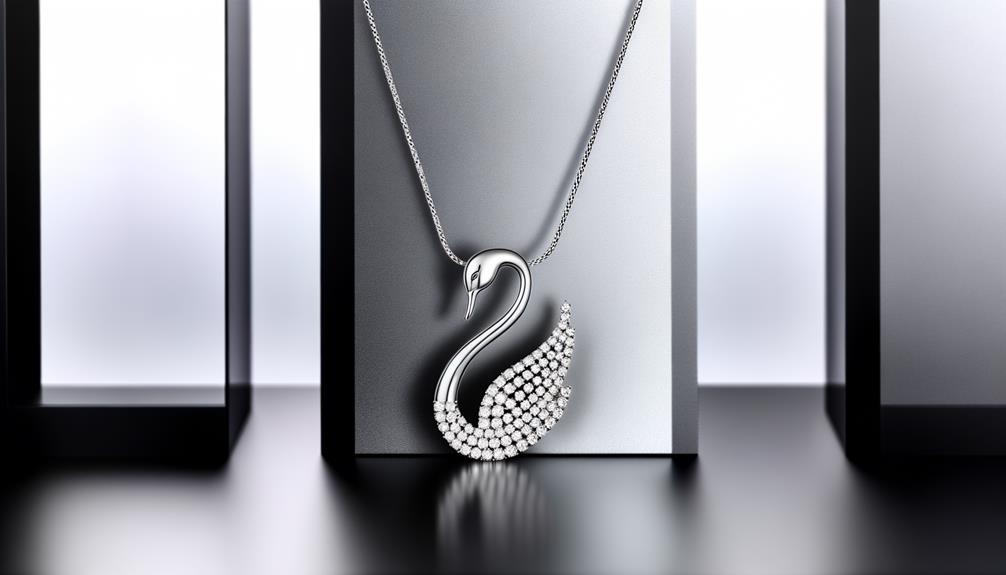
As the spiritual symbolism of the swan permeates various cultures, contemporary jewelry designers have ingeniously incorporated this emblem into their creations, reflecting both modern aesthetics and timeless meanings. Recent designs often feature sleek, minimalist interpretations, utilizing materials such as sterling silver, gold, and platinum to craft delicate, graceful forms.
Gemstones like pearls and diamonds are frequently added to evoke the swan's natural elegance and purity. These designs are not merely fashion statements but are imbued with profound symbolism, resonating with themes of transformation, grace, and fidelity.
Choosing Swan Jewelry
Selecting swan jewelry necessitates a nuanced understanding of its symbolic significance, design elements, and the quality of craftsmanship involved.
Historically, swans have symbolized grace, beauty, and transformation, making them a profound symbol in various cultures.
When choosing swan jewelry, consider the intricacy of the design; detailed engravings and lifelike representations often indicate superior artistry.
Evaluate the materials used—precious metals and gemstones enhance both aesthetic appeal and durability.
Additionally, investigate the jeweler's reputation and craftsmanship standards, as these factors guarantee longevity and value.
Conclusion
The swan symbol in jewelry, a timeless emblem, traverses the annals of history and culture, embodying profound meanings of love, spirituality, and beauty.
Its ethereal grace captures the essence of romantic devotion and transcendent purity.
The intricacies of modern jewelry designs continue to celebrate this majestic bird, weaving its symbolic threads into contemporary expressions.
Therefore, the swan remains an enduring motif, a proof of its enduring allure and profound significance across epochs and cultures.





